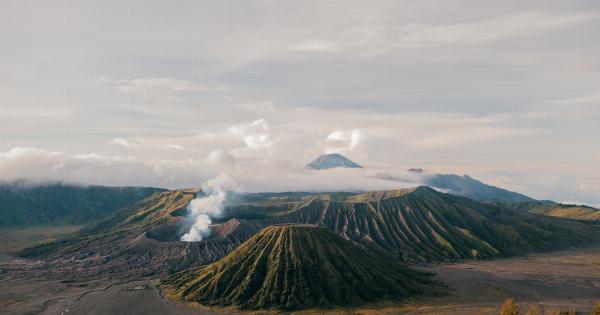Varicose veins are enlarged, twisted, and swollen veins that usually appear dark blue or purple. They often develop in the legs and can be seen as raised, bulging cord-like structures on the skin’s surface.
While varicose veins are a common condition affecting millions of people worldwide, they can pose certain risks when left untreated.
The Dangerous Point of Varicose Veins
As varicose veins progress and reach their most dangerous point, several complications can arise. These complications can have significant impacts on one’s health and quality of life.
It is important to understand the risks associated with varicose veins and seek appropriate treatment to prevent further complications.
1. Deep Vein Thrombosis (DVT)
One of the most serious complications of varicose veins is the development of deep vein thrombosis (DVT). DVT occurs when blood clots form in the deep veins, typically in the legs.
These clots can interrupt the normal blood flow and lead to swelling, pain, and potentially life-threatening conditions such as pulmonary embolism (a clot in the lung).
2. Superficial Thrombophlebitis
Superficial thrombophlebitis refers to the inflammation and clotting of veins close to the surface of the skin. This condition can cause pain, redness, and swelling around the affected area.
While it is generally less dangerous than DVT, it can still lead to complications if left untreated.
3. Ulcers
Untreated varicose veins can result in the development of venous ulcers. These ulcers are chronic wounds that usually form on the lower legs and ankles due to increased pressure and poor blood circulation.
Venous ulcers can be painful, difficult to heal, and require specialized care for effective treatment.
4. Bleeding
In some cases, varicose veins can rupture and cause bleeding. The veins’ weakened walls and increased pressure can lead to spontaneous bleeding, particularly if the affected area is scratched or injured.
While the bleeding may not be life-threatening, it can be difficult to manage and may require medical attention.
5. Skin Changes and Discoloration
Varicose veins that have progressed to a dangerous stage can cause significant skin changes and discoloration. The affected skin may become thin, dry, and itchy.
It can also develop a brownish discoloration, which is often a sign of poor blood circulation and insufficient oxygenation in the area.
6. Phlebitis
Phlebitis refers to the inflammation of a vein and can occur in varicose veins. The inflamed veins can become tender, red, warm to the touch, and painful. Phlebitis requires medical attention to reduce discomfort and prevent the spread of infection.
7. Restless Leg Syndrome
Restless leg syndrome (RLS) is a condition characterized by an uncontrollable urge to move the legs, typically due to discomfort or an uncomfortable sensation.
Varicose veins can contribute to RLS symptoms, making it difficult for individuals to find relief and have a good night’s sleep.
8. Reduced Quality of Life
Severe varicose veins can significantly impact an individual’s quality of life.
Chronic pain, limited mobility, self-consciousness about the appearance of the legs, and the inability to engage in physical activities can lead to decreased overall well-being and emotional distress. Seeking treatment for varicose veins can improve one’s quality of life and restore confidence.
9. Increased Risk for Skin Infections
The damaged and weakened skin caused by varicose veins can increase the risk of skin infections such as cellulitis. Cellulitis is a bacterial infection that can cause pain, redness, swelling, and warmth in the affected area.
Prompt medical attention is necessary to prevent the infection from spreading and causing complications.
10. Psychological Impact
Living with varicose veins, especially when they reach a dangerous stage, can have a psychological impact on individuals.
They may feel self-conscious about the appearance of their legs or experience emotional distress due to chronic pain and limited physical activities. Seeking treatment and support from healthcare professionals can help address these psychological effects.
Conclusion
Varicose veins can progress and reach their most dangerous point, causing various complications that affect both physical and emotional well-being.
It is crucial to recognize the risks associated with untreated varicose veins and seek timely medical intervention. Lifestyle changes, compression stockings, and minimally invasive procedures can effectively treat varicose veins, improving symptoms and reducing the risks of dangerous complications.






























